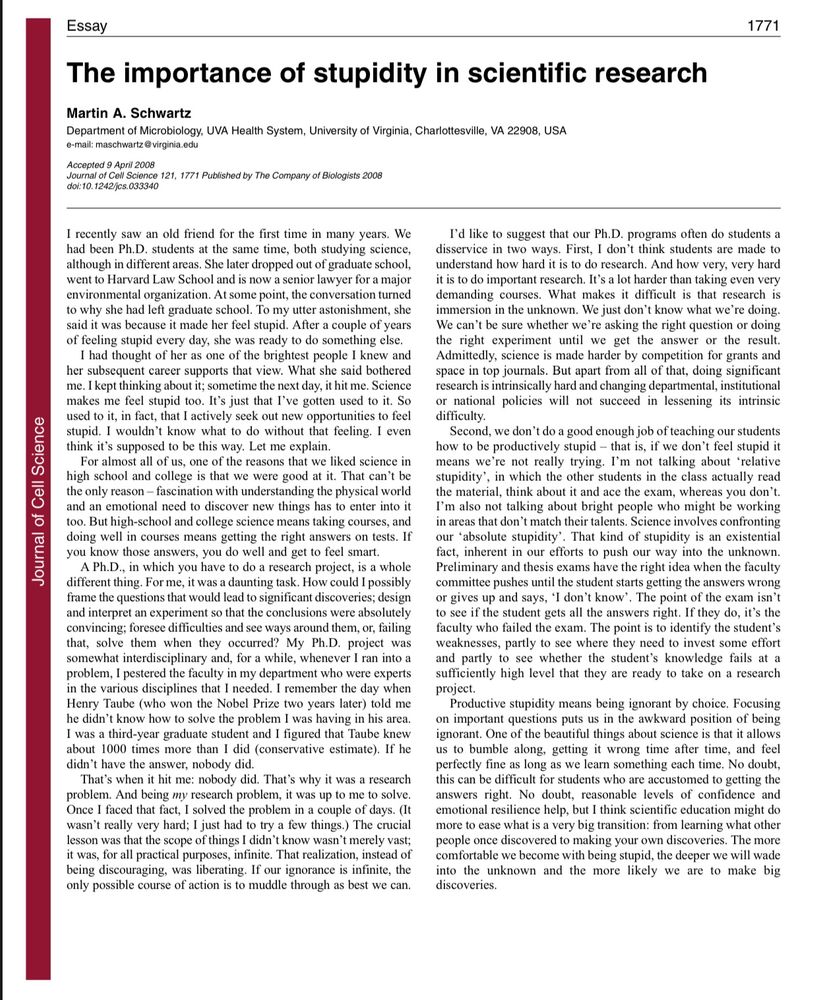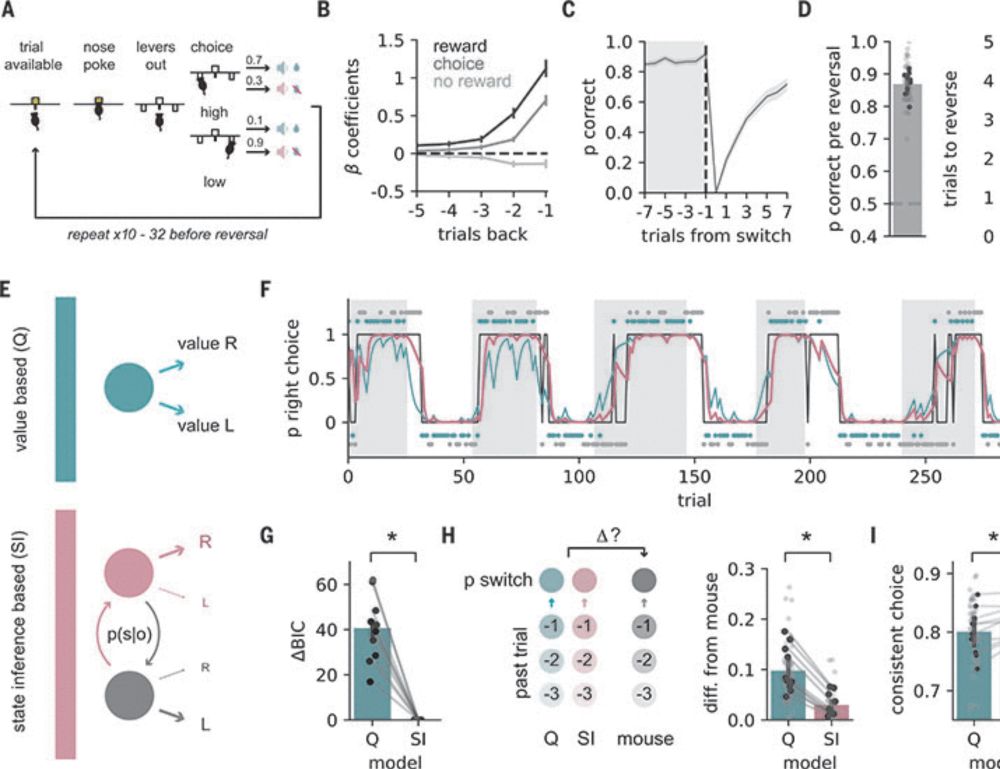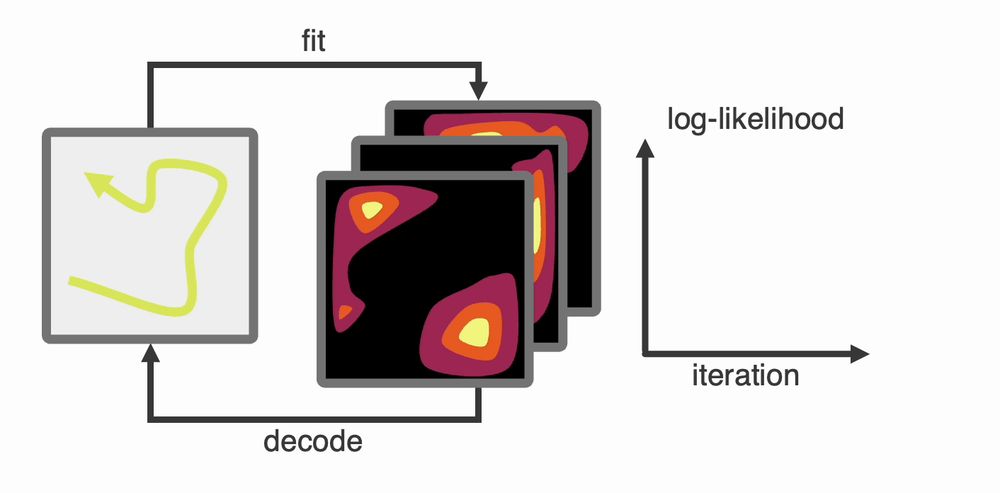Sarah Shipley
@shipleysj.bsky.social
Neuroscience postdoc
Barry Lab, UCL
Hippocampus, Spatial Cognition, Memory, AD
Barry Lab, UCL
Hippocampus, Spatial Cognition, Memory, AD
Pinned
Sarah Shipley
@shipleysj.bsky.social
· Nov 28

Disordered Hippocampal Reactivations Predict Spatial Memory Deficits in a Mouse Model of Alzheimer's Disease
Alzheimer's disease (AD) is characterised by progressive memory decline associated with hippocampal degeneration. However, the specific physiological mechanisms underlying hippocampal dysfunction in A...
doi.org
Excited to share that our preprint is out!
doi.org/10.1101/2024...
The structure of place cell reactivations was disordered in AD mice compared to WT! This was predictive of reduced place cell stability and memory performance on a radial-arm maze task.
Here are a few details:
1/5🧵
doi.org/10.1101/2024...
The structure of place cell reactivations was disordered in AD mice compared to WT! This was predictive of reduced place cell stability and memory performance on a radial-arm maze task.
Here are a few details:
1/5🧵
Reposted by Sarah Shipley
Three must read papers for PhD students. #scisky #PhD #science #research #academicsky
1. The importance of stupidity in scientific research
Open Access
journals.biologists.com/jcs/article/...
1. The importance of stupidity in scientific research
Open Access
journals.biologists.com/jcs/article/...

November 24, 2024 at 1:54 PM
Three must read papers for PhD students. #scisky #PhD #science #research #academicsky
1. The importance of stupidity in scientific research
Open Access
journals.biologists.com/jcs/article/...
1. The importance of stupidity in scientific research
Open Access
journals.biologists.com/jcs/article/...
Reposted by Sarah Shipley
OK If we are moving to Bluesky I am rescuing my favourite ever twitter thread (Jan 2019).
The renamed:
Bluesky-sized history of neuroscience (biased by my interests)
The renamed:
Bluesky-sized history of neuroscience (biased by my interests)
December 1, 2024 at 8:29 PM
OK If we are moving to Bluesky I am rescuing my favourite ever twitter thread (Jan 2019).
The renamed:
Bluesky-sized history of neuroscience (biased by my interests)
The renamed:
Bluesky-sized history of neuroscience (biased by my interests)
Excited to share that our preprint is out!
doi.org/10.1101/2024...
The structure of place cell reactivations was disordered in AD mice compared to WT! This was predictive of reduced place cell stability and memory performance on a radial-arm maze task.
Here are a few details:
1/5🧵
doi.org/10.1101/2024...
The structure of place cell reactivations was disordered in AD mice compared to WT! This was predictive of reduced place cell stability and memory performance on a radial-arm maze task.
Here are a few details:
1/5🧵

Disordered Hippocampal Reactivations Predict Spatial Memory Deficits in a Mouse Model of Alzheimer's Disease
Alzheimer's disease (AD) is characterised by progressive memory decline associated with hippocampal degeneration. However, the specific physiological mechanisms underlying hippocampal dysfunction in A...
doi.org
November 28, 2024 at 12:20 PM
Excited to share that our preprint is out!
doi.org/10.1101/2024...
The structure of place cell reactivations was disordered in AD mice compared to WT! This was predictive of reduced place cell stability and memory performance on a radial-arm maze task.
Here are a few details:
1/5🧵
doi.org/10.1101/2024...
The structure of place cell reactivations was disordered in AD mice compared to WT! This was predictive of reduced place cell stability and memory performance on a radial-arm maze task.
Here are a few details:
1/5🧵
Reposted by Sarah Shipley
Our latest preprint has landed www.biorxiv.org/content/10.1...
Fantastic work from @laurenb29.bsky.social and Will de Cothi showing how many of the cell types associated with subiculum (e.g. boundary vector cells, corner cells) can be understood as successor features. TLDR: SUB not CA1 is the SR
Fantastic work from @laurenb29.bsky.social and Will de Cothi showing how many of the cell types associated with subiculum (e.g. boundary vector cells, corner cells) can be understood as successor features. TLDR: SUB not CA1 is the SR

Unifying Subicular Function: A Predictive Map Approach
The successor representation has emerged as a powerful model for understanding mammalian navigation and memory; explaining the spatial coding properties of hippocampal place cells and entorhinal grid ...
www.biorxiv.org
November 26, 2024 at 12:21 PM
Our latest preprint has landed www.biorxiv.org/content/10.1...
Fantastic work from @laurenb29.bsky.social and Will de Cothi showing how many of the cell types associated with subiculum (e.g. boundary vector cells, corner cells) can be understood as successor features. TLDR: SUB not CA1 is the SR
Fantastic work from @laurenb29.bsky.social and Will de Cothi showing how many of the cell types associated with subiculum (e.g. boundary vector cells, corner cells) can be understood as successor features. TLDR: SUB not CA1 is the SR
Reposted by Sarah Shipley
Huge congrats to @karyna-mi.bsky.social for her paper published today in Science! She found that the hippocampus is really important for a key strategy we use to make decisions called hidden state inference! 🧪 🧠https://www.science.org/doi/10.1126/science.adq5874 1/7

Hidden state inference requires abstract contextual representations in the ventral hippocampus
The ability to use subjective, latent contextual representations to influence decision-making is crucial for everyday life. The hippocampus is hypothesized to bind together otherwise abstract combinat...
www.science.org
November 22, 2024 at 1:20 PM
Huge congrats to @karyna-mi.bsky.social for her paper published today in Science! She found that the hippocampus is really important for a key strategy we use to make decisions called hidden state inference! 🧪 🧠https://www.science.org/doi/10.1126/science.adq5874 1/7
Reposted by Sarah Shipley
What are the brain’s “real” tuning curves?
Our new preprint "SIMPL: Scalable and hassle-free optimisation of neural representations from behaviour” argues that existing techniques for latent variable discovery are lacking.
We suggest a much simpl-er way to do things.
1/21🧵
Our new preprint "SIMPL: Scalable and hassle-free optimisation of neural representations from behaviour” argues that existing techniques for latent variable discovery are lacking.
We suggest a much simpl-er way to do things.
1/21🧵

November 25, 2024 at 1:39 PM
What are the brain’s “real” tuning curves?
Our new preprint "SIMPL: Scalable and hassle-free optimisation of neural representations from behaviour” argues that existing techniques for latent variable discovery are lacking.
We suggest a much simpl-er way to do things.
1/21🧵
Our new preprint "SIMPL: Scalable and hassle-free optimisation of neural representations from behaviour” argues that existing techniques for latent variable discovery are lacking.
We suggest a much simpl-er way to do things.
1/21🧵

